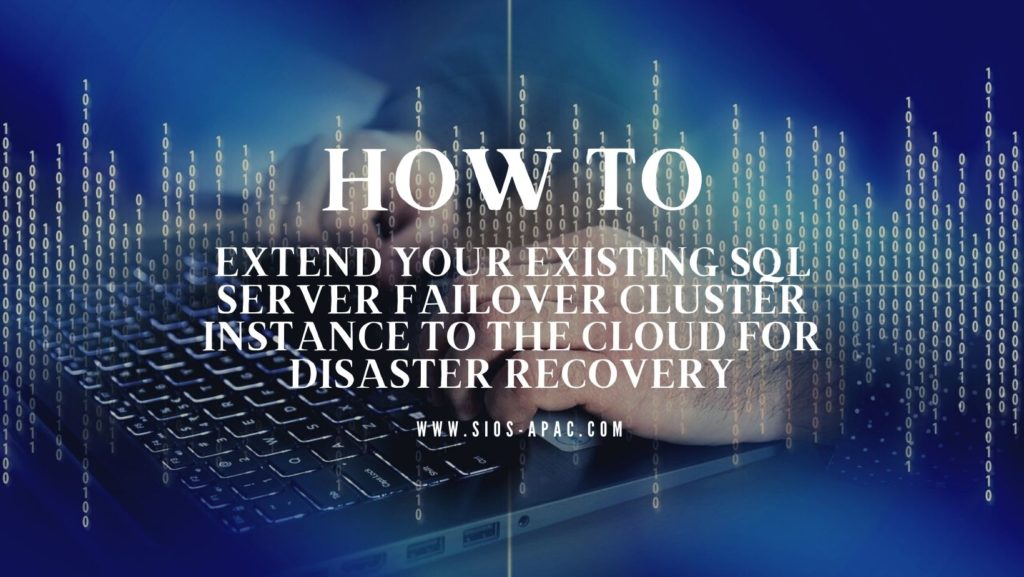Date: June 17, 2021
Tags: Cloud, disaster recovery, SQL Server Failover Cluster Instance
How To Extend Your Existing SQL Server Failover Cluster Instance To The Cloud For Disaster Recovery
Typically I point them to this DataKeeper documentation when someone asks me how to do extend existing SQL Server Failover Cluster Instance to the Cloud for Disaster Recovery.
This first document talks about extending the cluster and adding a 3rd node to the existing cluster. That’s fine if your cluster supports three nodes. But if you are using SQL Server Standard Edition, Microsoft limits you to a 2-node cluster. In the case of a 2-node cluster. you can still replicate to a 3rd node. Bear in mind the recovery will be more of a manual process. This process is described here.
People typically read these instructions and get a little worried. They feel like they would be performing open heart surgery on their cluster. It really is more like changing your shirt! You are simply replacing the Cluster Disk resource with a DataKeeper Volume resource. As you’ll see in the video below the process takes just a few seconds.
The code demonstrated in the video is show below.
Stop-ClusterGroup SQLServerGroup Remove-ClusterResource -Name "Cluster Disk 1" Set-Disk -Number 4 -IsOffline $False Set-Disk -Number 4 -IsReadOnly $False Import-Module -Name Storage Set-Partition -DiskNumber 4 -PartitionNumber 1 -NewDriveLetter X New-DataKeeperMirror -SourceIP 10.0.2.100 -SourceVolume X -TargetIP 10.0.1.10 -TargetVolume X -SyncType Sync New-DataKeeperJob -JobName "x drive" -JobDescription "sql data" -Node1Name primary.datakeeper.local -Node1IP 10.0.2.100 -Node1Volume x -Node2Name dr.datakeeper.local -Node2IP 10.0.1.10 -Node2Volume X -SyncType Sync Add-ClusterResource -Name "DataKeeper Volume X" -ResourceType "DataKeeper Volume" -Group "SQLServerGroup" Get-ClusterResource "DataKeeper Volume X" | Set-ClusterParameter VolumeLetter X Get-ClusterResource -Name 'SQLServer' | Add-ClusterResourceDependency -Provider 'DataKeeper Volume X' Start-ClusterGroup SQLServerGroup
After you run that code don’t forget you also need to click on Manage Shared Volumes to add the backup node to the DataKeeper job as shown in the video.
If you have SQL Server Enterprise Edition then the final step would be to install SQL Server in the DR node and choose add node to existing cluster.
If you are using SQL Server Standard Edition then your job is done. You would simply follow these instructions to access you data on the 3rd node and then mount the replicated databases.
These directions are applicable whether your DR node is in the Cloud or your own DR site.
